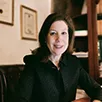- within Intellectual Property topic(s)
- in North America
1 Legal framework
1.1 What is the statutory or other source of trademark rights?
Swiss Trademark law & ordinance: LPM (Swiss Federal Law on Trademarks), OPM (Swiss Federal Ordinance on Trademarks)
1.2 How do trademark rights arise (ie, through use or registration)?
Through registration (exception: Art. 14 LPM, right to continue to use a non-registered mark)
1.3 What is the statutory or other source of the trademark registration scheme?
Swiss Trademark law: LPM, ordinance: OPM, and Swiss trademark office tax ordinance: Ota-IPI.
2 What constitutes a trademark?
2.1 What types of designations or other identifiers may serve as trademarks under the law?
Wordmarks, numbers, devices, combined (wordmark & device), sounds, smells, three-dimensional marks, colors.
2.2 What are the requirements for a designation or other identifier to function as a trademark?
A trademark must be a sign that distinguishes the products or services of the owner or licensee of the trademark from those of other companies.
A trademark must have abstract distinctive character: a mark is capable of constituting a trademark when, considered in the abstract, i.e., without taking into account the goods or services, it is able to fulfil the function of a trademark.
2.3 What types of designations or other identifiers are ineligible to function as trademarks?
Marks in the public domain, unless they have become established as trademarks for the goods or services concerned, shapes that constitute the very nature of the product and shapes of the product or packaging that are technically necessary, marks that are likely to mislead, signs that are contrary to public policy, morality or the law in force.
Marks identical to an earlier mark and intended for identical goods or services, marks identical to an earlier mark and intended for similar goods or services, where a likelihood of confusion exists, marks similar to an earlier mark and intended for identical or similar goods or services, where there is a likelihood of confusion. Art. 2 & 3 LPM: no exclusion (absolute or relative)
3 Registration procedure
3.1 Which governing body (ie, trademark office) controls the registration process?
The Swiss trademark office: Swiss Federal Institute of Intellectual Property.
3.2 What fees does the trademark office charge for an application, during prosecution and for issuance of a registration?
CHF 550 filing fee for 3 classes.
CHF 100 for each additional class over 3.
3.3 Does the trademark office use the Nice Classification scheme?
Yes.
3.4 Are 'class-wide' applications allowed, or must the applicant identify the specific goods or services for which the mark will be used?
Class-wide applications can be filed. However, for class 45, specific goods or services must be mentioned.
3.5 Must an applicant have a bona fide intention to use the trademark for the goods or services identified in the application in order to apply for registration?
No such requirement at filing. However, a bad faith filing can, in some instances, be attacked in the court on unfair competition grounds.
3.6 Does the trademark office perform relative examination of trademark applications (ie, searches for earlier conflicting marks)?
No.
3.7 What types of examinations does the trademark office perform other than relative examination?
Examination on the absolute grounds of Art. 2 LPM. No relative examination (i.e., examination of prior rights) is performed.
3.8 Apart from confusion with a senior mark, descriptiveness and genericness, are there other grounds under which a mark is ineligible for registration, such as public policy reasons?
Shapes that constitute the very nature of the product and shapes of the product or packaging that are technically necessary, marks that are likely to mislead, signs that are contrary to public policy, morality or the law in force (for example: Law on the protection of coats of arms LPAP). No examination of prior rights is performed.
3.9 Is there a separate or supplemental register on which descriptive marks may be registered?
No.
3.10 Can a third party object to registration of a mark before the application has been published (eg, by letter of protest to the trademark office)?
Practically speaking, no.
3.11 Must the applicant use the trademark commercially in order to obtain a registration?
No. However, five years after registration, the trademark can be attacked for non-use.
3.12 How much time does it typically take from filing an application to the first office action?
One or two months, but lately (due to Covid) longer, unless accelerated examination is requested at filing.
3.13 How much time does it typically take from filing an application to publication?
About 6 months.
4 Appeals
4.1 If the trademark office refuses registration, can the applicant appeal? If so, to what body and by what procedure?
Yes, an appeal, governed by the Federal Administrative Procedure (PA) to the Federal Administrative Tribunal (TAF).
4.2 What is the procedure for appealing a trademark office refusal?
An administrative appeal before the Federal Administrative Tribunal (TAF).
4.3 Can the reviewing body's decision be appealed? If so, to what body and by what procedure?
Yes, to the Federal Tribunal (TF), with the exception of Art. 73 LTF (Law concerning the Federal Tribunal) regarding an opposition procedure. In the case of an opposition procedure there is no appeal to the TF.
5 Oppositions
5.1 Can a third party oppose a trademark application?
A third party owner of a prior application or registration can oppose a published mark within 3 months of its publication.
5.2 Who has standing to oppose a trademark application?
The owner of a prior applied for or registered trademark.
5.3 What is the timeframe for opposing a trademark application?
Within 3 months of the publication of the trademark.
5.4 Which body hears oppositions?
The Swiss Federal Institute of Intellectual Property.
5.5 What is the process by which an opposition proceeds?
An administrative procedure governed by the PA, LPM and the OPM.
5.6 Can the decision on the opposition be appealed? If so, to what body and by what procedure?
To the TAF governed by the PA, but no Appeal to the Federal Tribunal (TF) is possible (Art. 73 LTF Exception).
6 Rights of registered and unregistered marks
6.1 What, if any, protection is afforded to unregistered trademarks?
Art. 14 LPM, right to continue to use a non-registered mark.
6.2 What legal rights are conferred by a trademark registration?
The right to exclude others from using a confusingly similar trademark unless a defence of prior use is successfully asserted.
6.3 If there is a separate register for descriptive marks, what legal rights are conferred by registration therein?
Not applicable as there is no supplemental register.
7 Enforcement and remedies for trademark infringement
7.1 What remedies are available against trademark infringement?
Declaratory Judgment Action 52 LPM
Cancellation Action 53 LPM
Writ of Mandamus 55 LPM
Temporary Injunction Action 55 LPM
Action for damages CO
7.2 What remedies are available against trademark dilution?
A rights holder of a famous trademark to take action against use by others in relation to any goods or services if its trademark is diluted or its reputation is exploited or affected. (Art. 15 LPM).
7.3 Does the law recognise remedies against other harms to trademark rights besides infringement and dilution?
Exploitation to or harm to reputation may be prevented if the mark is famous. (Art. 15 LPM).
7.4 What is the procedure for pursuing claims for trademark infringement?
Filing of a civil lawsuit in a Canton (a state) in Switzerland.
7.5 What typical defences are available to a defendant in trademark litigation?
No similarity between the marks and the goods & services.
Non-use of the plaintiff's trademark.
7.6 What is the procedure for appealing a decision in trademark litigation?
Appeal to the Federal Tribunal (TF).
8 Maintenance and removal of registrations
8.1 What is the length of the initial term of registration and what is the length of renewal terms?
10 years from the application date, with 10 year renewal terms.
8.2 What, if anything, must be submitted to the trademark office to maintain or renew a registration?
Pay the renewal fee (via payment of an invoice from the IPI).
8.3 What are the grounds for cancelling a trademark registration?
Non-use, successful opposition (administrative procedures) and civil action.
8.4 Under what circumstances may the trademark office cancel a registration on its own initiative?
Non-payment of the renewal fee.
8.5 What is the procedure by which a third party may seek cancellation of a trademark registration?
Opposition, non-use cancellation action and civil action.
8.6 What is the procedure for appealing a decision cancelling a registration?
Appeal to the TAF.
Civil appeal to the TF.
9 Licensing
9.1 Are there particular requirements, such as quality control by the licensor, for a trademark licence to be valid?
No, although this could change at some point in the future given decisions in nearby jurisdictions. Therefore, terms like quality control should be governed by the license agreement itself.
9.2 Must trademark licences be recorded with the trademark office or other governing body?
No, it is optional.
9.3 Can a licensor lose its rights in a trademark by failing to comply with its obligations under the licence, such as maintaining quality control?
No, unless the license agreement specifically provided for this.
10 Protection of foreign trademarks
10.1 Under what circumstances may foreign trademarks not registered in the jurisdiction be enforced (eg, under unfair competition law)?
The mark must be a famous one according to 15 LPM
10.2 Does the trademark office permit registration of a mark based on a foreign or international (Madrid) registration?
There is no base 44e (foreign country base) such as in the US, but rather a Paris Convention filing based on the first filing of the trademark in a foreign country.
Switzerland can be designated through the Madrid system.
The content of this article is intended to provide a general guide to the subject matter. Specialist advice should be sought about your specific circumstances.



